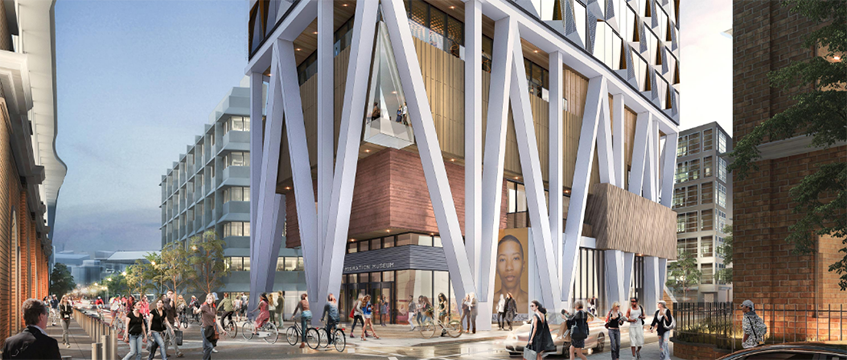Who are we actually building homes in London for?
COMMENT: James Pargeter, projects director at Greystar, explains why there is no one-size-fits-all model to solve the housing crisis.
At the beginning of February, I attended the New London Architecture “Big Debate” on the mayor’s draft London Plan. The clear and overriding concern for both panellists and the audience was the need for more housing.
COMMENT: James Pargeter, projects director at Greystar, explains why there is no one-size-fits-all model to solve the housing crisis.
At the beginning of February, I attended the New London Architecture “Big Debate” on the mayor’s draft London Plan. The clear and overriding concern for both panellists and the audience was the need for more housing.
This is hardly a surprise – housing supply has been an increasingly hot topic as the full scale of London’s historic problem has become apparent over recent years.
In addition to the actual debate, the organisers provided an interactive voting system for the audience which served to underline their concerns around housing.
Most significant was the overwhelming majority who viewed the mayor’s new housing delivery target of 65,000 per annum as unachievable. Only 4% thought this target was realistic, although to be fair, by the end of the debate this had risen to 7%, which may have provided some small comfort to the team at City Hall.
However, what surprised and disappointed me was that the most popular audience question raised on the voting system was not actually put to any of the panellists that evening.
It read as follows: “Many Londoners can’t now afford to buy, but are also ineligible for affordable housing. What hope is there that the London Plan will provide new homes for them?”. In other words, who are the 65,000 new homes every year actually intended for? I have raised this issue in many ways over recent months, as there never seems to be a straight answer.
The affordability spectrum
There is of course a clear need for more “genuinely affordable” housing, as well as a need for the “for sale” homes that effectively provide the subsidy for this provision through s106 Agreements.
But to imagine that everyone’s housing needs are provided for through this polarised model, and that all bases are covered by the conventional s106 system, is sadly mistaken – whatever the percentage of affordable housing provided.
There is now an enormous gulf between those eligible for designated affordable housing and those who can purchase new properties in high value areas such as London – in contrast to decades gone by, it’s very difficult to see how such a gulf can be crossed in either direction.
The affordability spectrum is obviously complex, with the population consisting of many more than just these two groups, and a very significant proportion of people are not being served by any new housing supply.
Despite the recent epiphanies around the sheer scale of the housing problem, there is a worrying trend of policymakers and local planning authorities solely focusing on the provision of only the most affordable tenure types, particularly social rent or its equivalent.
They are perhaps influenced by the fact social rent is now the only tenure that some regard as truly affordable and is therefore acceptable to local communities. We should also acknowledge that the word “affordable” has now become a highly technical term and is therefore widely misunderstood – either accidentally or even, occasionally, on purpose.
Housing quality
This creates a problem for us all and the consequences fall disproportionately on the squeezed middle, who are crucial to the economic sustainability of any place. Even if the long-term goal is to buy a home, the immediate problem is the attainability of quality new housing.
Relative costs of buying vs renting are often compared, but the issue is usually less a factor of regular monthly mortgage payments than of the enormous transaction costs of deposits, legal fees and stamp duty – particularly if the arrangement isn’t envisaged as long-term accommodation.
The only sector that seems capable of filling this space is build to rent. It’s aims of developing high quality new developments that simultaneously provide good management, are a world away from many of the “pot-luck” experiences that are regularly suffered in the wider PRS.
In addition, the intermediate tenure of affordable housing (in London, either at discount market or London living rent levels) can be fully integrated into the new development, achieving the holy grail of “tenure-blindness” and further enhancing flexibility for residents whose circumstances will inevitably change in the future.
These factors offer real benefits for both residents and the local community, and so should be welcomed with open arms.
What’s more, not only can build to rent provide additional housing, but it can usually do this more quickly than “for sale” schemes, across a more continuous affordability spectrum while introducing variety into a culture that has sadly become entrenched due to polarised market conditions.
Including build to rent within the mix will allow us to honestly state that new housing supply is genuinely providing homes for everybody.











